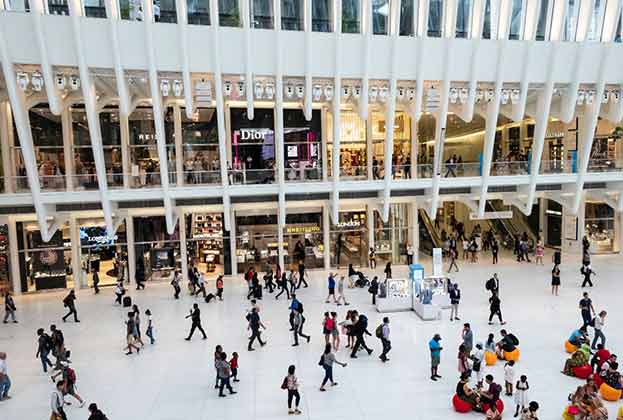While the number of UK retail store closures continues to rise, the vacancy picture differs hugely depending on location type and pitch
UK retail vacancy analysis
The declining need for space is by no means a new phenomenon; the number of retail outlets has been falling for decades. The Local Data Company announced that store closures in H1 2021 increased by 21% year-on-year, resulting in a net loss of 7,834 stores. While this trend is set to continue, not all retail places are affected equally; retail parks have only 6% vacant floorspace, compared to large city centres at 17%. The relative resilience of parades and small town centres sees voids below 10%.
Overall, the UK currently has 150 million square feet of vacant retail space, equivalent to 14.5% of retail units nationally. But vacancy within any centre is rarely uniform (see chart, above). We have examined primary, secondary and tertiary retail pitches within town and city centres nationally and this shows vacancy increases significantly outside of the retail core, with 46% of all empty units being within the tertiary retail pitch, compared to 15% in the primary retail pitch (see chart, below).
This demonstrates how retail provision has shrunk or moved within high streets, causing marginalisation and more limited occupation at the periphery. While this may seem an obvious conclusion, voids analysis has traditionally assessed a centre as a whole and not sought to understand the strengths and weaknesses in different areas. It is these tertiary areas that are most fragmented in terms of ownership and in need of change.
The opportunity for repurposing redundant retail to breathe life back into town centres has become more important than ever
Tom Whittington, Director, Commercial Research
The void rate itself masks a more serious concern, void length. Even in the most successful retail places, there is an increasing proportion of vacant units that are empty for long periods or even permanently, with 50% of vacant units having been empty for three or more years. This problem is exacerbated in most towns and cities across the country and accounts for 65 million square feet, most of which is no longer needed.
Furthermore, with changing consumer trends, we estimate that by the end of the decade, almost 308 million square feet of retail space will be redundant, increasing to 492 million square feet by 2040. It’s not that they don’t function as retail spaces, they simply have too much of it. This problem has been advancing for a long time and is reaching a critical moment in which we need a radical change in thinking of all retail places and town centres and the need to adapt and bring in a wider range of alternative uses.
Nevertheless, there remains demand for new retail concepts that fit with evolved consumer preferences, with the opportunity for repurposing redundant retail to breathe life back into town centres which, post-Covid, has become more important than ever before.
Read the articles within Spotlight: UK Retail Outlook Report below.


